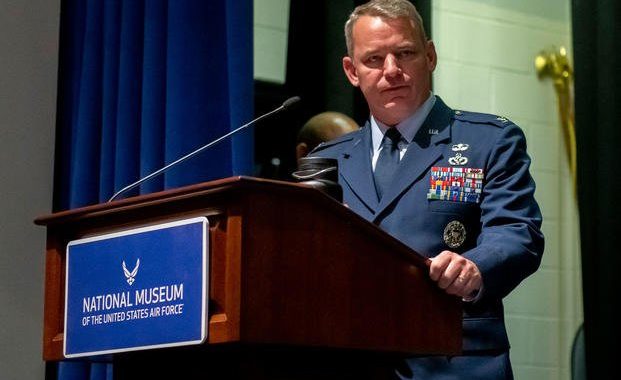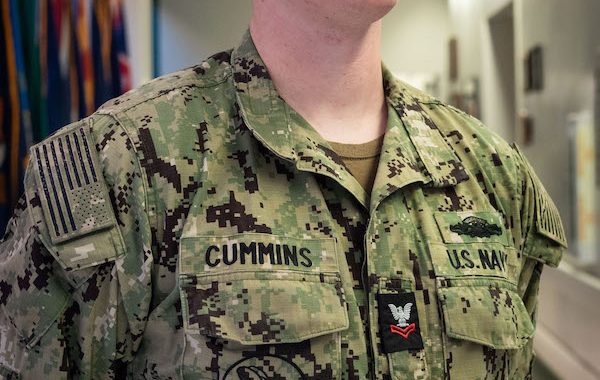Medical IMAs Mobilized for Historic COVID-19 Response
4 min readApril 4th felt like a typical Saturday for Col. Ari Fisher, an Individual Mobilized Augmentee with the Air Force Medical Readiness Agency. After a busy week in his civilian job as a physician’s assistant at a gastroenterology clinic, Fisher was roused from a quick afternoon rest by his cell phone ringing. The Air Force Reserve was calling on its medical professionals for immediate assistance with the coronavirus pandemic in New York City.
He and other Reserve Citizen Airmen were asked to report to Joint Base McGuire-Dix-Lakehurst, New Jersey, within 48 hours. This isn’t how deployments usually begin. Often times, military members and the units who support them are given several months to prepare for the trips.
While the movement was rushed for the 13 mobilized IMAs called up from the nearly 287 IMAs who volunteered to support the COVID-19 response, the staff at Headquarters Readiness and Integration Organization, which oversees nearly 8,000 Individual Reservists, was working tirelessly to ensure these Airmen had the best support possible. There had never been a mobilization of IMAs this fast in the history of the Air Force, and HQ RIO had to get creative to make it happen well.
IMAs are not assigned to one centralized location. They are assigned individually to active-duty units across the Air Force. Instead of being sent with other Airmen from their units, they were being sent on their own. They traveled from different cities across the country, from as far away as San Diego, California.
Fisher, a resident of Albany, New York, had never been asked to deploy so close to home before.
“This was truly one of those bizarre situations where I said, ‘Honey, can you drop me off at my deployment?’” he said.
For him, JBMDL was just a four-hour drive away. Most other IMAs needed to make flight arrangements to arrive with little-to-no notice.
HQ RIO’s team quickly created a Rapid Response Cell to assist with all aspects of the mobilization. The cell supported these Airmen with a 24/7 call center, personalized one-on-one support, help with all administrative needs, travel help and even filled out the required documents for the members. This lifted the stress of needing military computer access and allowed them to focus on getting to where the Department of Defense asked them to serve.
When these medical IMAs arrived at JBMDL they were moved to the hardest hit areas of NY.
“We basically go wherever they need us,” said Maj. Tynikka Houston, operating room nurse with the 59th Surgical Squadron, Joint Base San Antonio-Lackland, Texas.
While mobilized, Maj. Houston was assigned to the intensive care unit at Jacobi Hospital in the Bronx, a unit with all COVID-19 patients.
After about three days of inprocessing, the reservists were on the floor. They adjusted to the facilities, learned the charting systems and were caring for patients.
Houston said she was usually assigned one or two patients, but would often assist staff and have contact with as many as five per day.
During her 12-hour shifts, she spent hours with patients, helping with whatever they needed and providing a human connection. In addition to medical treatment, the major would do things to help patients get through the day such as play music and charge their cell phones so they could call their children. Not only were the patients fighting the disease, but they were doing so without the ability to see their family members in person.
Fisher, Team Lead for Jacobi Hospital and assigned to a COVID-19 step-down unit, also went wherever he would be most helpful.
“Some of us are doing everything literally from working as nursing assistants to providers all in the same shift,” he said.
If that meant charting for someone, then helping with a blood draw for someone else, then directing care for another, he did it.
“The mission is to take care of the people here, not to worry about what letters come after your name.”
After approximately 9 long weeks of difficult work, the coronavirus curve had flattened, and the IMAs and other reservists were allowed to return home to their families.
The RRC continued to support the 13 mobilized members, and the team came up with innovative ways for the IMAs to accomplish their outprocessing tasks, including health assessments, pay and travel reconciliations, virtual Deployment Transition Center activities facilitated by AFRC/A1 and finalizing orders, virtually.
“The normal systems the Air Force Reserve has for mobilized IMAs aren’t optimized for a situation like this,” said Maj. Sergio Apedaile, HQ RIO Special Assistant to the Commander and RRC lead. “It presented a lot of challenges for us, and although there are still a lot of things we could do better, I’m really glad we could help in our own way to complete this mission.”
Once the reservists arrived home, they spent 14 days in self-isolation before taking a second COVID-19 test. After some much needed rest and recuperation, the IMAs in conjunction with the RRC completed their final outprocessing and were released from their mobilization.
“I am extremely proud of the amazing medical officers who brilliantly served the city of New York during the height of the COVID-19 outbreak there. It is an honor to serve alongside them in the Air Force Reserve Command,” said Col. Amy Boehle, HQ RIO commander.
“I’m also proud of the Rapid Response Cell members who worked tirelessly to provide truly innovative solutions to make sure our mobilized members had what they needed, and were able to receive all the support necessary to both inprocess, serve and outprocess. Being an IMA isn’t always easy and being mobilized only adds another layer of complexity. Everyone really stepped up and made it happen.”
By Staff Sgt. Tara R. Abrahams





